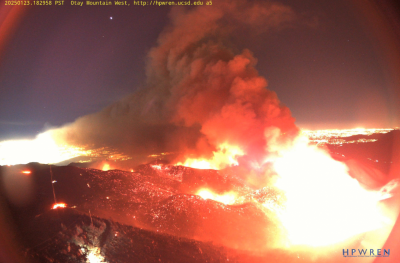FUTURE OF PARKWAY PLAZA MALL REENVISIONED
City awaits Council’s next motion
By Rachel Williams
July 14.2024 (El Cajon) -- With online sales taking a bite out of retail traffic, shopping malls across the U.S. are struggling and some have closed down. Seeking to avoid that scenario, the City of El Cajon commissioned a market analysis envisioning redevelopment options for Parkway Plaza, East County’s largest regional shopping mall.
Council members unanimously favored a motion to move beyond proposed aspirational measures and begin the next step toward transforming Parkway Plaza into a mix of residential, retail, offices, entertainment and community space.
These “Eatertainment” facilities would combine compelling, traditional dining options and immersive sport-centered bars with unique, dynamic lifestyle retail shops, all oriented around a linear park.
- Read more about FUTURE OF PARKWAY PLAZA MALL REENVISIONED
- Log in or register to post comments

 Update 8:46 p.m.-- The fire is now 600 acres, per Watch Duty App. No structures are currently threatened.
Update 8:46 p.m.-- The fire is now 600 acres, per Watch Duty App. No structures are currently threatened. update 4 p.m.-- The fire is now 148 acres per Watch Duty app and is large enough to be visible from space. (Photo, right, via NASA)
update 4 p.m.-- The fire is now 148 acres per Watch Duty app and is large enough to be visible from space. (Photo, right, via NASA)